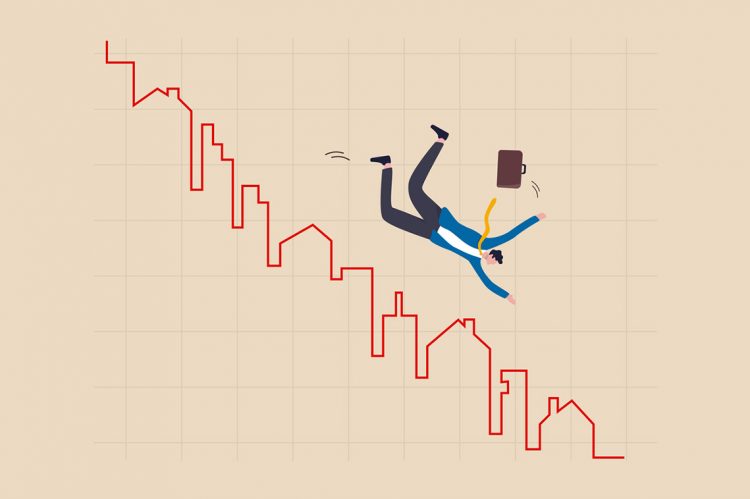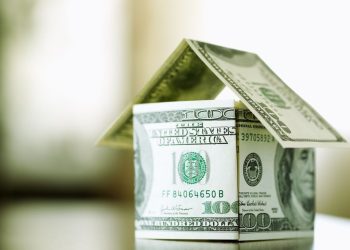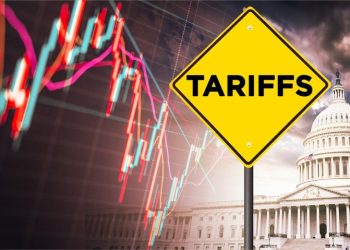In the face of rapidly spiking mortgage rates, existing-home sales took a significant tumble in November, falling 7.7% from the previous month to a seasonally adjusted rate of 4.09 million as real estate activity plunges ahead of what might be a long winter for the industry.
Sales reached their lowest annualized rate since May 2020, a point that coincided with restrictive lockdowns and widespread economic uncertainty at the onset of the pandemic. Before that, November’s sales figures were the lowest since the end of 2010 during the foreclosure crisis.
“In essence, the residential real estate market was frozen in November,” said NAR Chief Economist Lawrence Yun in a statement. “The principal factor was the rapid increase in mortgage rates, which hurt housing affordability and reduced incentives for homeowners to list their homes. Plus, available housing inventory remains near historic lows.”
With 10 straight months of declining sales (another record), housing has seemingly borne the brunt of the Federal Reserve’s crusade to end inflation, with low inventory, low builder and consumer confidence and areas of price decreases taking hold.
“We are in the midst of an unusual housing market,” said Dr. Lisa Sturtevant, Bright MLS chief economist, in a statement. “While inventory has risen slightly, it is still relatively low in most markets. Buyers have more leverage on price and can more often negotiate terms, but it remains a seller’s market across much of the country, for now, at least.”
From a 1.5% drop in September to a 5.9% drop in October, the existing-home sales market decelerated through the fall, which coincided with a particularly harsh increase in mortgage rates. Rates sharply declined in November following some positive news on inflation, though whether that trend will continue—or will boost home sales—remains to be seen.
In a conference call with reporters, Yun echoed Sturtevant’s characterization of the current market, saying it was “quite amazing” that sales have swung all the way back to their 2020 lows.
“We have this strange market where there are far fewer buys, far fewer transactions, yet due to the limited supply, some multiple offers, and homes are selling reasonably fast,” he said.
The median existing home price in November was $370,700, a 3.5% increase over last year, which Yun said would be considered “somewhat” normal and healthy in a vacuum, but is a “marked slowdown” from the last couple years.
Prices have fallen almost 11% from June, according to Yun. Normal seasonality usually sees an 11% decrease between the summer peak and winter trough, he explained, which means there is likely going to be significant further drops in prices before spring.
At the same time, average time on market is 24 days, and 23% of listings are going above asking. That is the result of motivated buyers and limited inventory, which has propped up prices and shored up the current market, making price declines like those seen in 2008 unlikely.
Worryingly, however, distressed sales ticked up slightly, going from 1% to 2% of the total market. While that is historically low, Yun said it was still notable in the context of a broader economic pullback or a weakening labor market.
Regionally, the West continues to fare worse as far as sales—something Yun pointed out in his market forecast for 2023. That region saw a 12.5% monthly drop in existing-home sales, down 45.7% from a year ago.
In the Midwest, sales retreated 5.6% from the previous month, 30.6% below where they were one year ago. In the South, existing-home sales sank 7.1% in November from October, and fell 35% from the previous year. The Northeast saw a 7% decline month-to-month, and a 28.4% drop from 2021.
“Real estate is clearly in recession for people in the industry; far fewer business activities,” said Yun. “It is a recession. One can actually see it in the GDP figures.”
Another notable data point from this November—homes at the highest price point saw a historic drop in sales, with properties priced $1 million or more down 41.2% from last year.
“In the early months of COVID…was all about the upper-end market, but what’s happening today is we are seeing the largest decline in million dollars and over, that unique category,” Yun said.
Yun was also careful to note that this data was drawn from the late days of October and early parts of November, when mortgage rates fully peaked. That allows for some optimism that lower mortgage rates will push sales up somewhat even before a potential spring bounceback.
He also offered another nugget of potential optimism not directly related to the sales numbers (while still being careful to note how difficult it is to forecast the future). Apartment constructions are up, and rents have moderated, which could have ancillary impacts on the broader economy—in particular, the Fed’s still uncertain path forward on interest rate hikes.
“We are seeing a very active apartment building market, and with more apartment supply coming onto the market, the rental increases should moderate, and that should moderate —and that, in turn, should moderate the Federal Reserve,” Yun said.












